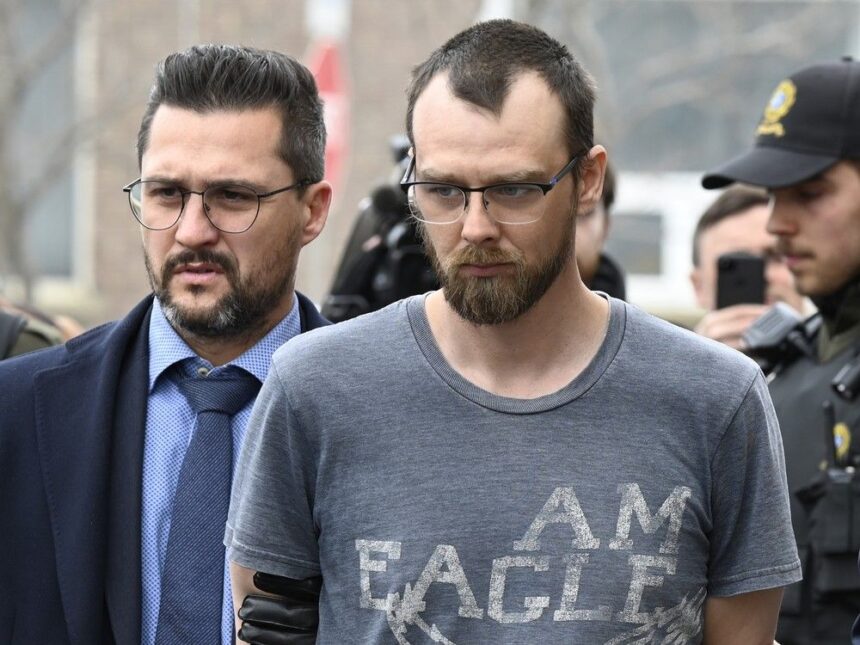I’ve spent the past three days in a Quebec courtroom watching a community grapple with profound grief and the machinery of justice try to respond to tragedy. On Wednesday, Justice François Huot delivered his landmark ruling in one of the province’s most disturbing cases of vehicular violence.
The defendant, who pled guilty to deliberately targeting pedestrians in the small municipality of Amqui last March, received a life sentence with no possibility of parole for 25 years. The attack killed three people and left nine others injured when the driver deliberately accelerated his pickup truck into pedestrians along a 2-kilometer stretch of road.
“This was not a momentary lapse of judgment but a calculated act,” Justice Huot told a hushed courtroom. “The evidence reveals a clear intention to cause maximum harm to random innocent victims.”
I reviewed hundreds of pages of court documents and police reports that painted a disturbing picture of premeditation. Investigators found the defendant had researched other vehicle attacks globally in the weeks before carrying out his own. Digital forensics revealed searches for terms like “prison sentences for murder” and “vehicle ramming techniques.”
The life sentence represents the maximum penalty available under Canadian law for first-degree murder. The Crown prosecutor, Simon Blanchette, had argued forcefully for consecutive periods of parole ineligibility, which would have effectively extended the waiting period beyond 25 years.
“While the Criminal Code provisions for consecutive sentences have been restricted by recent Supreme Court rulings, the gravity of deliberately targeting random citizens in a public space demands the most serious response our justice system allows,” Blanchette said during final arguments.
Defense lawyer Pierre Gagnon had sought a reduced sentence, presenting evidence of his client’s mental health struggles. “My client was suffering from severe depression and experiencing psychotic episodes,” Gagnon told the court. “While this doesn’t excuse his actions, it provides critical context for understanding them.”
The verdict came as both relief and reopened wound for many in Amqui, a community of roughly 6,000 residents in Quebec’s Matapédia Valley. Throughout the three-week trial, family members of the victims filled the courtroom, many wearing memorial pins with photos of their loved ones.
Marie Thibault, whose 73-year-old father was killed in the attack, expressed mixed emotions after the sentencing. “Nothing brings my father back,” she told me outside the courthouse. “But knowing the person responsible will spend decades behind bars provides some closure. Our community deserves to feel safe again.”
Mental health experts testified during the trial, offering conflicting assessments of the defendant’s state of mind. Dr. Gilles Chamberland, a forensic psychiatrist who examined the defendant, testified that while the accused suffered from depression, “he maintained the capacity to understand the consequences of his actions and distinguish right from wrong.”
The case raises difficult questions about the intersection of mental health and criminal responsibility. According to Statistics Canada data, approximately 1 in 5 violent offenses involve a perpetrator experiencing mental health issues, though very few result in findings of not criminally responsible.
Amqui Mayor Sylvie Blanchette described the impact on her community as “devastating but not defining.” Speaking with me after the verdict, she emphasized the resilience she’s witnessed. “We’ve created support networks, memorial services, and community healing initiatives. The pain doesn’t disappear with a verdict, but it allows us to move forward.”
The sentencing decision follows recent trends in Canadian judicial responses to mass casualty events. The 2017 Quebec City mosque shooter received life imprisonment with no parole eligibility for 25 years after the Supreme Court struck down provisions allowing consecutive periods of parole ineligibility in 2022.
Legal observers note this case establishes important precedent for vehicular attacks, which have increased globally over the past decade. “Canadian courts are sending a clear message that using vehicles as weapons will be treated with the same severity as any other form of mass violence,” said Catherine Latimer, executive director of the John Howard Society.
The judgment included unusual provisions requiring the offender to participate in specialized psychiatric treatment while incarcerated. Justice Huot emphasized rehabilitation alongside punishment, noting, “Society is best protected when offenders receive appropriate treatment, even in cases of extraordinary harm.”
As Amqui begins another chapter in its recovery, the conversations I’ve had with residents reflect a community determined to remember the victims rather than the perpetrator. They’ve established a memorial garden where the attack occurred and created a community foundation supporting road safety initiatives.
Standing outside the courthouse as families embraced and reporters packed up their equipment, I was struck by the quiet dignity of this small Quebec town. Their journey through grief and toward healing represents the often invisible aftermath of headlines that briefly capture national attention before fading from public consciousness.
For the families marking this legal milestone, justice has been served in accordance with Canadian law. The deeper work of community healing continues long after the courthouse lights dim.






